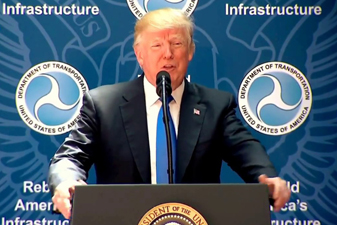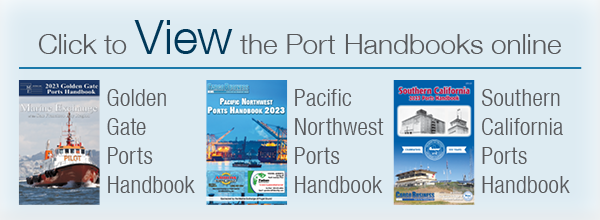|
By Katie Cross, Associate, Blakey & Agnew
Since his campaign, President Trump has promised to revamp U.S. infrastructure through a combination of public and private funds. With the release of the fiscal year 2017-2018 notice of funding opportunity (NOFO) for the Nationally Significant Freight and Highway Project program (NSFHPP), previously authorized by the Fixing America's Surface Transportation (FAST) Act, the Administration provides a glimpse into is policy direction.
While the Obama Administration referred to NSFHPP as the Fostering Advancements in Shipping and Transportation for the Long-term Achievement of National Efficiencies (FASTLANE) program, the Trump Administration has rebranded it the Infrastructure for Rebuilding America (INFRA) program. According to the NOFO, this name points to the Administration's priorities of "rebuilding and revitalizing our economy through infrastructure investment."
This program was a landmark of the FAST Act, which was signed into law in December 2015. The first of its kind, NSFHPP, now INFRA, was designed in law to make investments in large freight and highway projects. Statute focuses the program on goods movement infrastructure and listed goals such as increasing global economic competitiveness, improving connectivity between freight moves, and improving the safety, efficiency and reliability of the movement of freight and people.
The U.S. Department of Transportation (USDOT) doled out the first chunk of the $4.5 billion provided to the program by the FAST Act in July 2016, awarding $759 million to 18 projects. Examples of projects that were awarded funding include the Port of Savannah International Multimodal Connector project sponsored by the Georgia Ports Authority, the Cross Harbor Freight Project at the Port Authority of New York and New Jersey, and the State Route 11 Segment 2 and Southbound Connectors project sponsored by the San Diego Association of Governments.
In October 2016, USDOT issued a NOFO for round two of the then-FASTLANE grants but the Obama Administration did not make awards before leaving office in January 2017. Instead, with the exception
|

of around $80 million for small projects which will be awarded under the October 2016 priorities, the Trump Administration wrote its own set of criteria for the same pot of money. These criteria, published in a June 2017 NOFO, focus on: 1) national and regional economic vitality; 2) innovation in three categories including environmental review and permitting, project delivery approach, and safety; 3) leveraging federal funding; and 4) performance and accountability.
It is in this third merit criterion that the Administration focuses on encouraging projects to bring the best deal to the table, including the use of public-private partnerships and other private sources of funding. USDOT encourages leveraging of federal funds but the NOFO states that USDOT "recognizes that applicants have varying abilities and resources to contribute non-Federal contributions… [and] the Department will consider those constraints," particularly excusing "rural or less-wealthy" communities from the standard that will be applied to those that are "urban or more wealthy."
The combination of the leftover October 2016 NOFO funds and the funds provided for the fiscal year 2018 grants to make around $1.5 billion available in funding through this most recent solicitation. Applications are due on November 2, 2017. Projects selections are subject to a joint decision making process between USDOT and Congress. USDOT will review all applications and submit a list of potential recipients to Congress. Congress then has 60 days to disapprove of a project through a joint resolution between the House and the Senate.
Blakey & Agnew, LLC is a public affairs and
communications consulting firm based in
Washington, DC.
|




